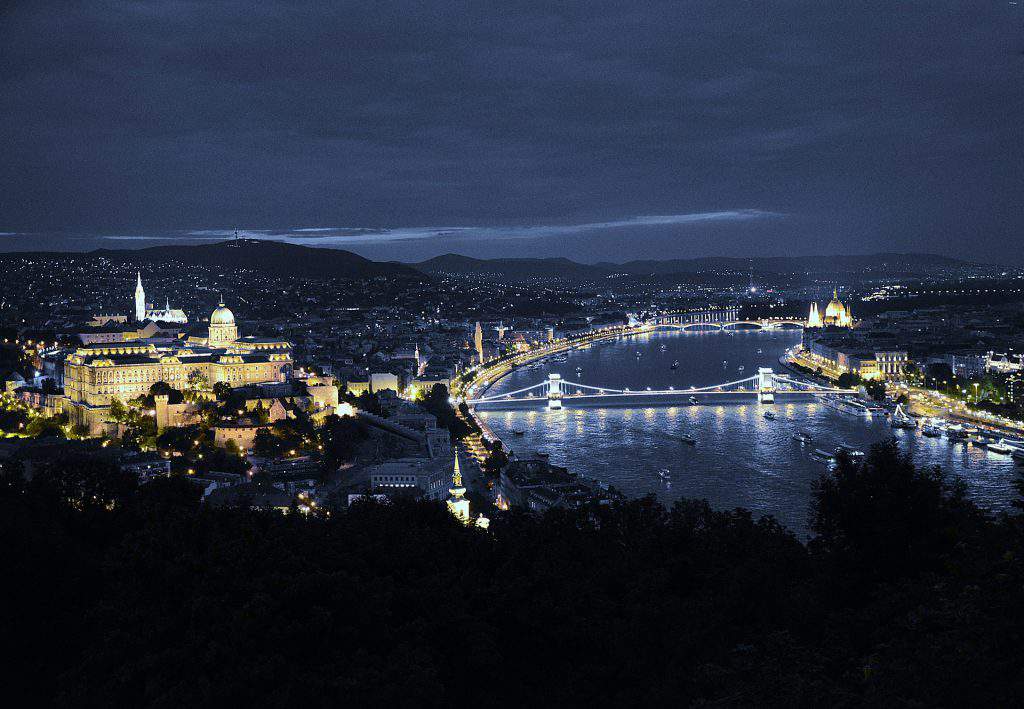Hungary in a nutshell

Do you remember the first time you heard about Hungary and what it was about? The answers to this question are quite diverse; however, our small country of Hungary probably still remains unknown to a lot of people. What is the reason behind this and why are the answers to the first question diverse? Daily Fail Centre put together a fun guide about Hungary, which might answer the questions.
So let’s talk a bit about Hungary with the help of basic data, our complicated language, fun facts, Hungarian inventions and some historical information. This is Hungary in a nutshell!
First off all, if you’ve never heard of us, that’s okay. After all, we’re not even as big as the state of New York (New York: 141,300 km2 / 54,55 sq mi and Hungary: 93.030 km2 / 35.919 sq mi) and we only have about half the population (New York: 19.5 million and Hungary: 9,9 million).
We don’t really have a typical national colour, emblem or symbol like most countries, although we do have dogs where you can’t tell which end is which and they perfectly blend in with rugs. They are the Hungarian Pulis:

Mark Zuckerberg’s puli, Beast
Let’s just say that our language is really weird, complicated and utterly difficult to learn. The Hungarian language belongs to the Uralic language family and is one of the few languages in Europe that are not part of the Indo-European family. Our language is agglutinative – which means that the way words and sentences work is completely different from the English language for example.
We have two vowels, ‘ő’ and ‘ű’, which don’t exist anywhere else. Coincidentally “ő” means both “he” and “she”. We also have some funny words that are very long, grammatically correct but are not really used in everyday speech: “megszentségteleníthetetlenségeskedéseitekért” (44 graphemes) and “elkelkáposztástalaníthatatlanságoskodásaitokért” (47 graphemes).

Unlike most of the world, our names have the family name first, which makes sorting much easier (e.g. Kovács Helga). Some people find our language so weird that it’s sometimes used as throwaway gibberish in movies (e.g. Iron Man, eXistenZ, The Usual Suspect, Blade Runner).
We are very proud of the many inventions that come from Hungary, like the dynamo (Ányos Jedlik, 1861), holography (Dénes Gábor, 1947), Vitamin C (Albert Szent-Györgyi, 1931), the ball-pen (Lászó Bíró, 1931) and the Rubik’s cube (Ernő Rubik, 1974).
These achievements have earned us 12 Nobel Prizes so far. Enrico Fermi’s answer to the question whether or not extra-terrestrial beings exist is the following: “Of course, they are already here among us: they just call themselves Hungarians.”
We’re also pretty good at sports too: looking at the all-time aggregated medal table of Summer Olympic Games between 1896 and 2016 (in the order of the top 10 countries’ number of gold medals), we see that our small country of Hungary is still in the amazing 8th place, behind countries like the USA, Russia, Germany, U.K., France, China and Italy. And with our 495 medals won at Summer Olympic Games, Hungary is the most successful nation never to have organised Olympic Games.
So if we’re so awesome… how come many people have never heard of us? Well, for a number of sad reasons. See, traditionally, we’ve been pretty bad at handling wars. Almost all of the wars we had to fight we fought on our own soil, to defend ourselves, and we lost almost all of the biggest ones.
In the 16th century, the expansion of the Ottoman Empire eventually caused them to collide with Hungary: the country itself was torn into three parts, only to be re-joined in the 17th century by the Habsburg Monarchy. The relationship of the Austrian Empire and the Kingdom of Hungary wasn’t symbiotic, which eventually escalated into a revolution in 1848 that ultimately led to failure, capitulation and the martyrdom of many.
WWI ended devastatingly for Hungary with the Treaty of Trianon, which was the peace agreement that formally ended WWI between most of the Allies and the Kingdom of Hungary. As a result, Hungary lost the 2/3 of its territories and its people.

During WWII, Hungary was part of the Axis powers, who in turn moved into the country and deported a large portion of the population. Then, when Germany lost the war, the Soviets “liberated” the country in 1945 and stayed there until 1991. Hungary tried revolting in 1956, but the result was predictable, as before: failure, capitulation and the martyrdom of many.
As it was expected, during the Soviet occupation, Hungarian economy deteriorated and ostensibly hasn’t recovered since.
What does all this result in? A bunch of pretty miserable things. For one, we’re in top 20 as far as suicide rates around the world go. Hungary’s also in an “illustrious” place on the list of countries sorted by quantity of alcohol consumption.
So how depressed are we? The 1933 song Gloomy Sunday performed famously by, among others, Billie Holiday in 1941, is generally referred to as “the Hungarian suicide song”, both due to its melancholic lyrics and the number of suicides after its release.
There you have your brief guide to Hungary. This is truly Hungary in a nutshell as naturally the country has way more to it than what an article is limited to say. Hopefully now you know more about the paradoxes of this tiny country in Middle Europe alternating between kicking ass and getting its ass kicked. And never forget that there’s always a silver lining… 🙂

Photos: www.facebook.com/MarkZuckerberg, Memrise, www.flagmagazin.hu
Copy editor: bm
Source: http://www.dailyfailcentral.com/





